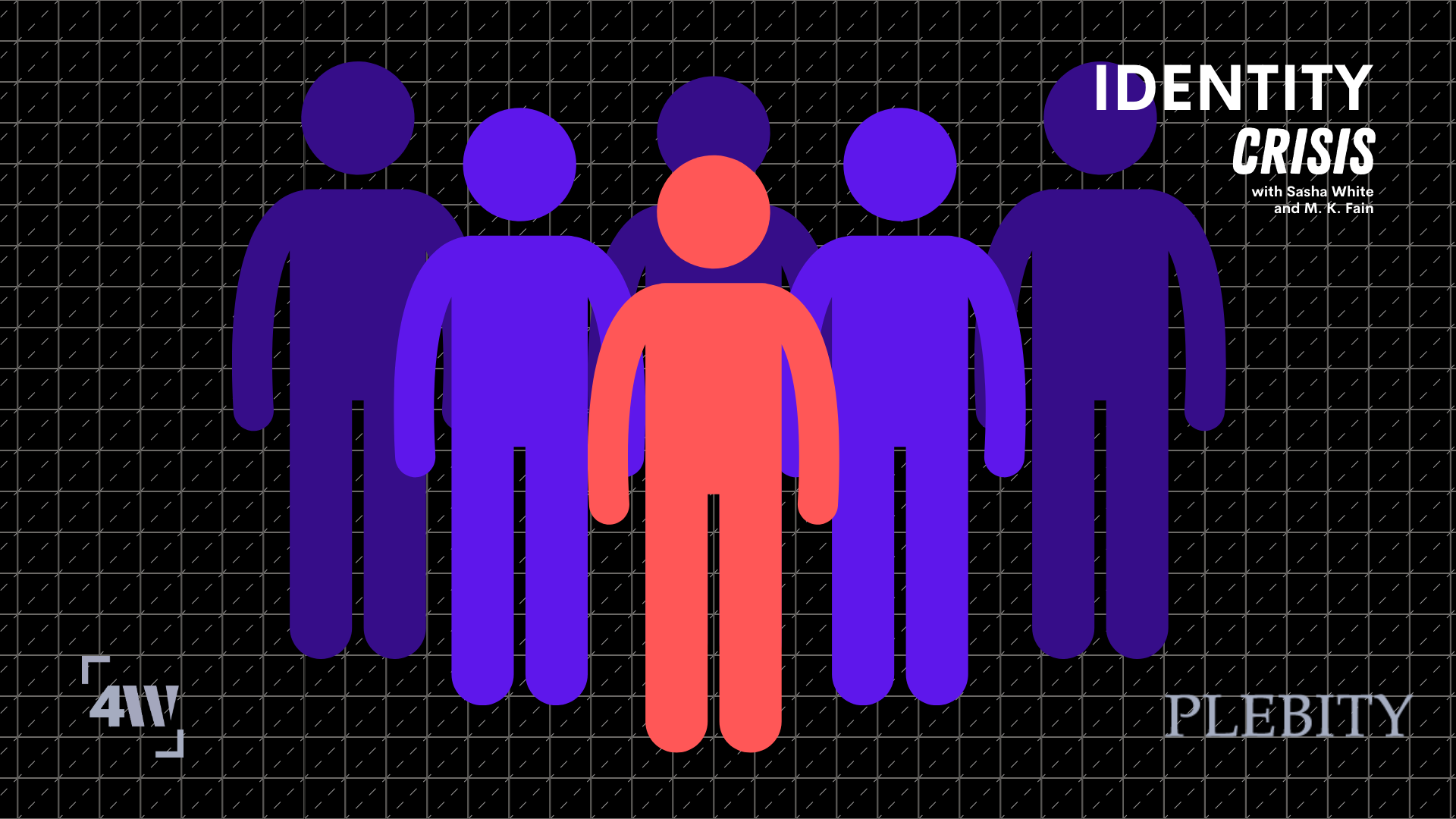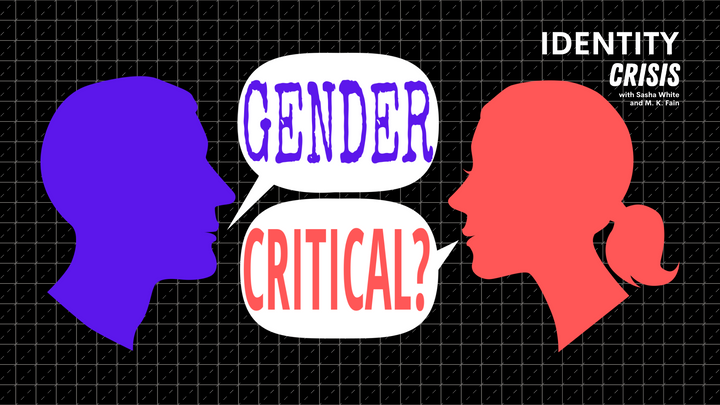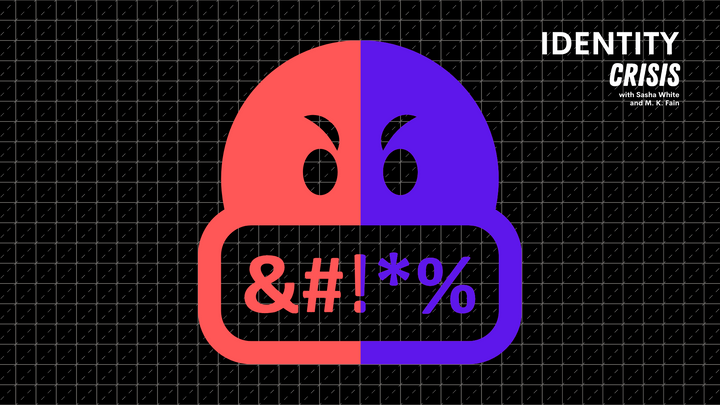Identity Crisis: Why is Everyone Going Along With Gender Ideology?
Understanding human conformity biases and preference falsification

"Identity Crisis" is a new weekly column and podcast for young people struggling with the modern orthodoxy of gender identity ideology—developed in collaboration between Plebity and 4W by M. K. Fain and Sasha White. Each week, we will answer one or two of your questions, both as a running column here on 4W, and in the form of a video on YouTube.
To submit a question, email us at: [email protected]. We may publish your question in full, so be sure to leave out or change any identifying details if you would like to remain anonymous. Or, specify that your question is private and you would rather we discuss it in a general way.
This is a question we hear all the time, and one that we even regularly ask ourselves. Everyone knows that humans can not change sex, so why does it seems like everyone is also going along with gender ideology? It can be hard to grapple with the contradiction, leading us to seek explanations about the seemingly illogical human behavior all around us. Is everyone blindly parroting “trans women are women” stupid or uneducated? We know that can’t be it—many very intelligent people such as academics and community leaders seem to be going along. Are those pushing unethical gender medicine on children truly evil? Probably not, most doctors and psychologists genuinely want to help people. What about our friends, family, and coworkers who we know are good, smart, and empathetic people? Why do they appear to support this craze?
While it’s hard to describe every single human’s motivation with a single explanation, understanding human conformity psychology can help us comprehend this seemingly irrational behavior.
Research on social conformity and evolutionary theories
A chapter published in the 2015 Evolutionary Perspectives on Social Psychology provides a helpful meta-analysis of conformity research. The researchers identified three primary categories of conformity: conformity in perceptual judgment, behavioral conformity, and conformity in opinions and attitudes. In the spread of gender ideology, we likely see aspects of all three.
The most famous example of conformity in perceptual judgment is the 1950s experiment by Solomon Asch on how a person would conform to a group majority in denying his own perception. In the study, participants were asked to state which line of a series of lines was the shortest—the answer was quite obvious. Unknown to the naive subject, everyone else in the room was working with the researchers (“confederates”), providing intentionally wrong answers to see how it impacted the subject.
The study found that three out of four participants went along with the incorrect answer at least some of the time. However, two-thirds of the total choices made by the subjects throughout the study were ultimately correct despite the pressure of the incorrect majority. Further replications found that the rate of conformity increased, at least to some degree, with the number of confederates. When there was only one confederate feeding incorrect answers, the effect essentially disappeared.
This study demonstrates how, at least some of the time, people will deny their own senses to conform with the majority. This provides a pretty direct parallel to groups of people agreeing “trans women are women” when they can see with their own eyes that the person in question is clearly a man.
Some researchers have proposed an evolutionary basis to conformity, and there are a variety of reasons why conformity could be advantageous to reproduction. As the authors of the chapter point out, when there is uncertainty about what the safest thing to do is, going along with the majority is actually often the safest route. If everyone else has done this thing and survived, it is likely that you will, too. Groups are also more likely to ostracize individuals perceived to be different, and human evolutionary survival has been greatly dependent on an ability to work together. Our brains treat being perceived “different” as a literal threat to our survival because, for most of the history of our species, it was. These patterns have been replicated in many of our evolutionary neighbors, as well, such as chimps.
Conformity of attitudes and opinions is also clearly at play in the gender debate. Many people are not simply going along with the apparent majority in order to avoid standing out, but seem to genuinely adopt the opinions put forth by gender ideology such as “human sex is not binary,” “there is no harm to women’s rights by allowing men who identify as women in women’s spaces,” or “children with gender identity issues should be given cross-sex hormones.” What’s especially alarming to many feminists is how many women seem to be adopting these opinions.
A 2006 study published in the Journal of Personality and Social Psychology found that there is evidence for not only an evolutionary basis for human conformity behavior, but also sex-specific patterns. For both men or women, when people are in a self-protective mode (anxious or afraid) they are more likely to adopt the group opinion. However, when participants were primed to consider mate-attraction, men were less conformist (trying to stand out from the group) while women became more conformist in their opinions (taking on the more “desirable” trait in women of “agreeableness”).
In essence, this study demonstrates that while both men and women may conform to group opinions when they are afraid, women are more likely to conform to remain attractive to men. This likely provides some explanation for why so many young women seem more willing to go along with opinions that are ultimately detrimental to women’s rights.
Of course, it’s important to recognize that fear and self-protection do play a major role for both men and women. Many people are not genuinely adopting the opinion that “trans women are literally women,” however they are publicly going along with this belief anyway. This can be explained by a phenomenon known as preference falsification.
Preference falsification: hiding the real majority opinion
Preference falsification is a form of lying with the specific goal of communicating a preference (or opinion) that is different from your own, especially because the expressed opinion is considered more socially acceptable. Developed by Timur Kuran, the theory provides an explanation for how minority-opinions end up being perceived as the majority. A recent episode of the podcast Hidden Brain dives into the details of this theory, and it is really worth a listen.
This pattern is prevalent in dictatorships and fascist regimes where expressing dissent is harshly punished. Kuran provides examples such as North Korea, where even family members of Kim Jong Il have been publicly executed for expressing dissent. This provides a chilling effect where members of the actual majority, people who wish to overthrow the regime, censor themselves for their own safety, providing the illusion of a majority of support for the dictator.
But this isn’t just happening in communist dictatorships. Kuran discusses how even in the United States, people are afraid to share their political opinions or beliefs out of fear that they will be fired or “canceled.” Many were surprised by Donald Trump’s victory in 2016 for exactly this reason—people were afraid to express their real preference in public, but in the privacy of a voting booth the truth came out.
We have good evidence that preference falsification is happening in the United States today in the debate around “gender identity” policies, leading many to perceive a majority in favor of these policies while, secretly, the majority actually disapproves of these policies.
Polling sponsored by WoLF in October of 2020 found that a majority of voters disagree with a range of “gender identity” policies such as those recently enacted by the Biden administration:
Voters overwhelmingly disapprove of policies that allow the placement of male sexual offenders or domestic abusers in women’s prisons, with only seven percent of voters supporting such policies. Two out of every three likely voters (66.93 percent) state that they “strongly disagree” with such policies, including a majority of liberal voters who disagree with such policies.
The poll also revealed cross-partisan disapproval of “gender identity” based policies, such as those impacting single-sex sports. The majority of voters of all parties (66.96 percent) state that men or boys who identify as transgender should not be permitted to compete in women and girls’ athletics.
A majority of voters also disagree with allowing men who identify as transgender in women’s changing rooms (56.86 percent) and homeless shelters (53.19 percent).
Over two-thirds of voters (66.84 percent) also disagree with children under the age of 18 undergoing physical sex-change surgery or taking cross-sex hormones.
There was also cross-partisan agreement that parents should not face losing custody of their children for refusing to allow their children to undergo these procedures with only 17.01 percent of voters supporting such policies.
Considering that preference falsification may be happening in the polling itself as well, these are pretty strong numbers indicating that we have a “silent majority” of people opposed to gender identity policies in the United States. On the other hand, we also have a culture where people are fired for speaking this opinion out loud—the perfect storm for preference falsification to occur and a false majority to emerge.
What does this mean for the future of gender identity?
There’s ample evidence that most people in the United States do not genuinely believe in gender identity or support its corresponding policies but are simply conforming because of a basic psychological urge to protect themselves.
One upside to preference falsification, according to Kuran, is that it can allow dissent to stew under the surface without being detected—leading to extreme sudden swings in the public when that dissent finally boils over. As Biden enacts more and more policies forcing this conversation on a national stage, it seems increasingly likely that the silent majority will stop being so silent.
Some research on conformity has found that when one person breaks a pattern of providing incorrect answers, the subject is more likely to also follow suit and break conformity. Every person speaking out makes it easier for the next person.
It’s inevitable that all of this will come to an end. Like the other great moral panics and societal delusions of history, one day, people will look back on this era and wonder, “How could so many people have gone along with this for so long? And could it happen to us today?”
The answer is obvious: so long as human psychology is biased towards conformity, society will be prone to outbreaks of seemingly smart, logical, and kind people going along with something that makes no sense at all. But these patterns always break eventually—ironically, once people realize that they are not alone in their secret nonconformity.
You can listen to "Identity Crisis" on Spotify, Google Podcasts, or wherever you get your podcasts. Subscribe to updates on Identity Crisis here: identitycrisis.xyz/get-updates
Enter your email below to sign in or become a 4W member and join the conversation.
(Already did this? Try refreshing the page!)





Comments